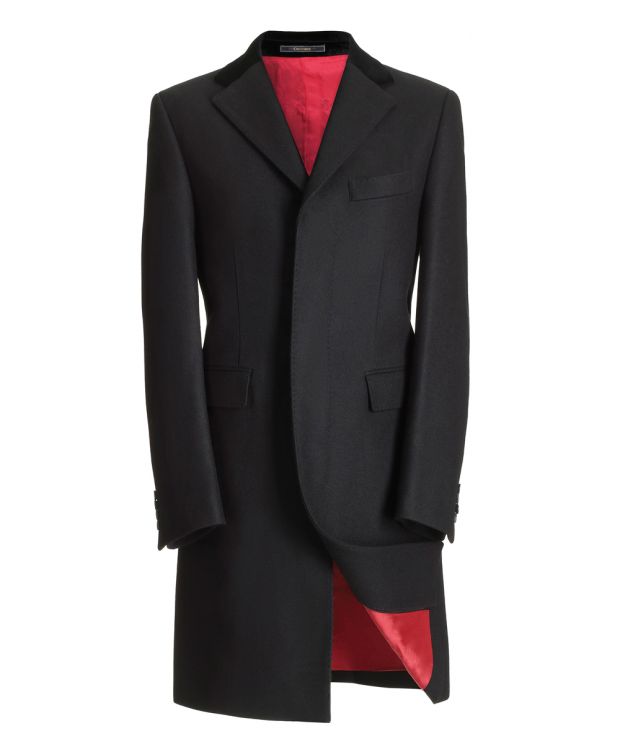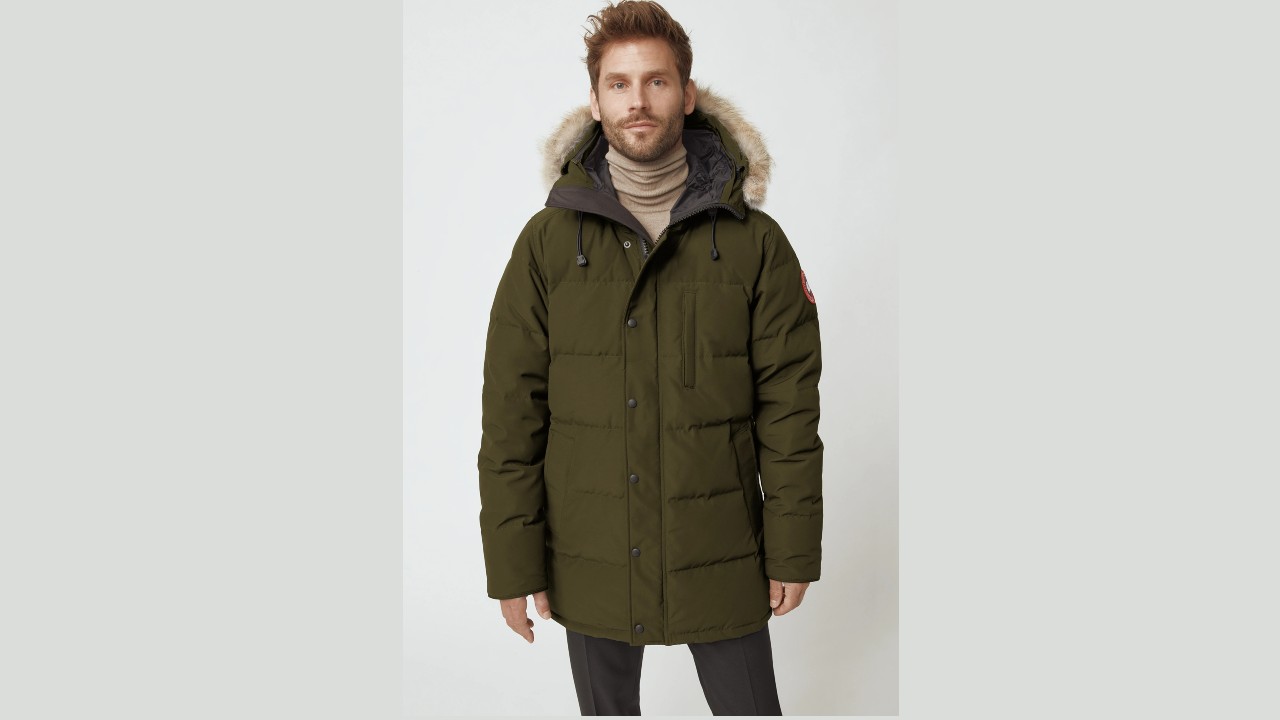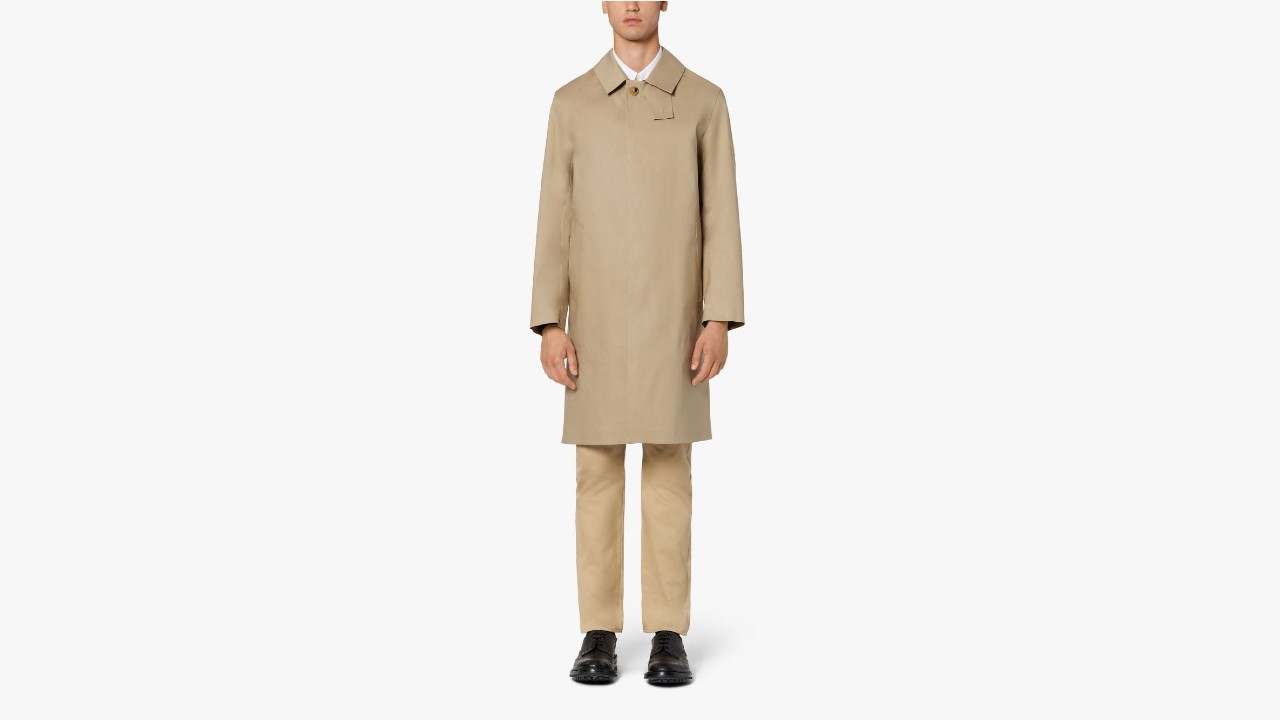Five Classic Men’s Coats
These five classic coats are immune to the curse of unfashionability. Their guardians and champions explain the magic
In This Series
You can trust Coach
- Five Classic Men’s Coats
- The Crombie
- The Parka
- The Pea Coat
- The Mac
The Trench Coat

Corby single-breasted trench coat, £650, buy on aquascutum.com
The expert: Ying Sy, Head of Menswear, Aquascutum
What are the origins of the trench coat?
It was developed for the military in the First World War because soldiers needed a durable, water-resistant coat to repel rain, mud and liquids.
Why is it an essential part of a man’s wardrobe?
It’s practical and versatile, has stood the test of time and evolved from its military origins to something private investigators and spies wore in the ’50s and ’60s, to Wall Street bankers in the ’80s, to the wardrobe staple today.
Humphrey Bogart brought his own trench coat to wear in the film Casablanca, it’s that essential. We’ve collaborated with his estate to reproduce that exact style, which we launched in May. It’s a more classic, loose fit. Inside it has a deep pocket for your newspaper and a watch pocket.
What should a man look for when buying one?
It should be a good fit in a durable fabric. The slimmer fit is more fashionable, whereas the traditional cut suits a businessman who can wear a suit underneath. Go for the timeless colours such as beige, navy or black.
What details make your trench the best?
Our classic is always in a cotton gabardine fabric, which is water repellent. The belt always has a D ring, which dates from its military history, when soldiers attached a grenade to it.
Every season we add an alternative like military green or pale blue. This season, it’s royal blue, which goes well with navy and charcoal, and is easy to dress up or down.
It was originally mid-calf length, but now we also offer the Corby, which is knee length, and the Richmond, which is hip length and popular with younger clients.
How do you keep it current?
We don’t change the original but we develop new ones every season, in lighter fabrics and different colours – and we use modern methods, such as laser cutting or bonding rather than stitching.
How many do you own?
I have upwards of 10. I wear the Corby, in beige and navy, all the time and I wear the Nylon one in the summer.
What’s the best way to wear it?
My style is smart casual; I wear it with smart pants, a shirt and trainers. In summer, I wear it in navy with lightweight chinos, a T-shirt and white trainers. You can also wear it over a smart suit. I even wore one to a wedding.
The Crombie
It's the epitome of timeless elegance, and the wearer of the stylish Crombie coat certainly cuts a dash.

Crombie Retro, £895, buy on crombie.co.uk
The expert: Alan Lewis, chairman of Crombie
What are the origins of the Crombie design?
In the early 1800s John Crombie was determined to make a high-quality cloth that could be used for outerwear, which was weather-resistant and tailored like a jacket. So he rode from Aberdeen to London on horseback and convinced London tailors to use both his cloth and his designs. The fashion leaders supplied by the tailors got the message and began dressing English royalty, tsars and heads of state. The main design features of the original Crombie coat haven’t changed, we still work from the original, carefully conserved block patterns.
What are those design features?
The Crombie Retro is a three-quarter length, single-breasted, fly-fronted [the buttons are concealed] Melton wool overcoat with three horn buttons and a central back vent. It has a velvet collar; the colour varies, but with the navy or black Retro, it matches the coat. It has two flap pockets, an upper-breast pocket, and three inside pockets. And it has red lining.
The wool is made in the UK to our specifications. It has a dense weave that results in a smooth finish. It’s so closely woven and pressed that it isn’t possible to discern the warp and weft with the naked eye and as a result, it’s extremely warm, durable, wind and weather resistant.
Why is it an essential part of a man’s wardrobe?
It fits like a glove, it looks stylish and elegant – you immediately notice when someone is wearing one. Some years ago, I was asked to prepare the UK industry to enter the Soviet bloc during perestroika. In a business meeting, I’d just seen Gorbachev get off a plane and at once recognised he was in a Crombie and I said to him, “I’m not just a financier and investor, I’m also your tailor!” It’s super-luxurious and it lasts. They’re passed on from grandfathers to grandsons.
Paul Weller saw a Crombie in the window of our Conduit Street store. He slammed on the brakes of his Mini and, gesticulating wildly, rushed into the shop shouting “I want that coat!”
How do you keep it current?
The classics don’t change but we produce seasonal collections twice a year, so we often use traditional British checks, tweeds and tartans, and, currently, herringbone. Our Autumn/Winter collection this year includes Air Force blue and pure cashmere varieties.
What’s the best way to style it?
When I wear it with a suit, I like to see a pocket hanky in the suit pocket. I wear it flamboyantly. When I wear it with jeans and a T-shirt, I wear it as jacket.
How many do you own?
I own just one; I’ve had it for 20 years and it gets better with age. It’s navy blue, with a navy blue velvet collar and lined with the Crombie Crested silk lining. When I wear it I look like a person who knows about high-quality fashion.
The Parka

Carson parka, £800, buy on canadagoose.com
The expert: Spencer Orr, Vice-President Design and Merchandising, Canada Goose
What are the origins of the Canada Goose parka?
Every single one of our parkas is built from necessity. The Expedition parka is used in Antarctica and the Snow Mantra is designed for workers in the Canadian Arctic. People in northern regions see our parkas as a survival essential. They need to trust us and our authenticity; the parka has to do what we say it’ll do.
Who wears your parkas?
We design for “Goose people” then tweak it for future collections. Laurie Skreslet was the first Canadian to climb Everest in 1982 and we outfitted that expedition, as we did for Ray Zahab, an extreme adventure athlete when he ran across the Sahara Desert in 111 days in 2006, and champion dog sledder Lance Mackey.
What makes yours the best?
Its function and its fabric. We always ask: what does it need to do? How does it work? How can we make it the best? All our jackets are tested based on a thermal index rating so they work in specific different temperatures. They’re water resistant for breathability.
We use four proprietary blends of down [all of which contain some Hutterite down – the finest Canadian down available], depending on the temperature range we need, as well as fabrics we’ve developed for our exclusive use.
What are the best details?
The ribbed cuffs are reinforced with a heavy woven nylon; the outer cuff is shorter and the inner cuff is knitted and hugs your wrist. It makes you feel safe and secure and protected. You can wear the hood three ways; up, open or closed at the front. It has a wire brim, to make it smaller if the wind and snow are blowing. We have upper hand warmer pockets and kidney pockets with heat packs. We use coyote fur, when we need to, because it doesn’t freeze or hold moisture, and it keeps the face warmer.
What about parkas for people just feeling the cold in the city, not the Arctic?
We make the same promise to everyone to keep them warm so they can enjoy the cold. We use the same fabrics and elements, as the Expedition for example, but we use less down per square inch to hit the right temperature.
How do you make such a functional item desirable?
It’s an investment rather than a luxury; it’s something that gets passed down the generations. Our craftsmanship comes through every piece.
How many do you own and how do you wear it?
I’m probably into the 20s. The Carson is long enough to wear with a blazer or a suit. I wore a Hybridge Light this weekend with a shirt and jeans, but I also wear it with jogging pants and Adidas. I wear a dark grey when I’m dressed up, military green if I’m wearing jeans and for a sportier look, I’d wear a red one. Parkas work with everything.
The Pea Coat

Pea coat, £185, buy on alphaindustries.com
Mike Cirker, CEO of Alpha Industries
What are the origins of the pea coat?
The design goes back to the 16th century when the Dutch Navy ruled the seas and they chose this silhouette and this wool as the best option. It was taken on by the British Navy, and from there the US Navy adopted it. The military typically updates its products with fabric, trends and cuts, but the pea coat is unchanged because they got it right the first time, and there’s no reason to improve it. It’s still made from the same wool, with the same shape and up to 10 anchor buttons.
What are the design details that the military got right?
It’s about aesthetics, durability and function. The military needs to look official and appropriate. It has a clean formal line, with a narrow waist and flip-back and the wide shoulders look large and powerful. The fabric is the major component. We use Melton wool, which is a type of weave that creates coarse, strong, heavy, durable wool. It’s beefy; of all the natural fibres, it’s the best in protecting the wearer from the wind and water spray. It’s functional; the oversize lapel protects from the elements and being double-breasted adds an extra layer of wool for heat protection. Navy blue is the classic; we also offer a black and heather grey.
Do you tweak the design?
Our heritage collection is specific; for example, we’ll find a vintage US Navy pea coat from the ’60s and replicate it to a point that makes sense. The only thing tweaked regularly is the fit, as bodies change. The average man then was 5ft 8 and is now 5ft 10. Fit is more art than science.
We’ve added half-lined nylon sleeves as this is more comfortable for bare arms. We take advantage of little updates such as anti-pilling and anti-static; you wouldn’t be aware of the technology but you’d appreciate it. We’re very careful – if we modified it too far we’d lose its essence as an historical jacket.
You make two styles; what’s the difference between them?
The US Navy pea coat is our core collection and the other, the Ahoy, is a lighter, more fashionable alternative. You’ll always see the original in our collection and for our contemporary versions we use modern fabrics like washed down cotton or nylon.
What’s the best way to wear a pea coat?
A pea coat is formal in its practical simplicity. You can wear it on top of a blazer or business suit as an overcoat. I wear mine with a hoody, sneakers and jeans. I have one pea coat, which I’ve had for at least five years. It suits all ages.
The Mac

Oxford Fawn Bonded Cotton 3/4 Coat, £995, Mackintosh, 19 Conduit Street, London, W1S 2BH, 020 7493 4667
The expert: Andrea Austoni, global commercial director, Mackintosh
What are the origins of the Mac?
The scientist Charles Mackintosh invented the first rubberised waterproof fabric 200 years ago. He went on to create the coat made of the same fabric. The company started in 1843 and the outerwear that he designed is now a must-have for the modern man who appreciates quality and has timeless style.
What design details make it a must-have?
Our classic raincoat comes in two lengths and the shape has never changed from the original. It’s single-breasted with five buttons. It has a buttoned throat latch and underarm vents for extra ventilation in humid weather. The collar is shaped, not pointed and not rounded. It’s A-shaped so that the water runs off it more easily. It’s versatile, easy to style, you can wear it across all the seasons, and the shape is contemporary.
What makes yours the best?
We’re the leaders because of our name and our origins, our unique fabric and the visibility of being waterproof, and the way we make our coats. The material is two layers of cotton with rubber in the middle. No one else uses this material. No one else uses our shape and no one else tapes all the seams.
All of our classic raincoats are hand-made in the Mackintosh factory in Cumbernauld, Scotland. The quality that comes from a hand-made product is a huge part of our heritage and our authenticity and we’re very proud of it; we put it on all our labels.
It takes two years for a person to be fully qualified to develop and make a Mackintosh. It takes nine weeks just to learn how to glue the seams with the finger and every single seam is glued by hand. Once the different pieces of material have been cut, each person in our factory can make five Macs a day. So the whole process is niche, and it takes time. It’s a luxury item and you can see the quality. Winston Churchill wore a Mackintosh!
How do you keep it current?
We don’t alter the classics, we’re very protective of them, though we might change small details, like the buttons. But on our other raincoats, we use different materials for a more modern take. We’re currently using nylon and denim fabrics and we’ve also introduced designs like bold wide stripes and camouflage. These aren’t hand-made.
How many do you have?
Before I joined the company, I had two; the shorter and the longer classic styles in blue and khaki. Now I have two more, one in denim.
What’s the best way to wear it?
I wear them with jeans or chinos, sneakers or slip-ons, and a simple T-shirt. The Mac looks modern when you style it with casual wear. It’s a very clean look.
Sign up for workout ideas, training advice, reviews of the latest gear and more.
